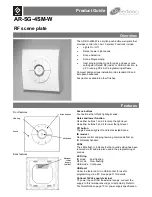
DocID018909 Rev 11
RM0090
USB on-the-go full-speed (OTG_FS)
1368
interrupt (IISOOXFR) inform the application that isochronous IN/OUT packets were
dropped.
Choosing the value of TRDT in OTG_FS_GUSBCFG
The value in TRDT (OTG_FS_GUSBCFG) is the time it takes for the MAC, in terms of PHY
clocks after it has received an IN token, to get the FIFO status, and thus the first data from
the PFC block. This time involves the synchronization delay between the PHY and AHB
clocks. The worst case delay for this is when the AHB clock is the same as the PHY clock.
In this case, the delay is 5 clocks.
Once the MAC receives an IN token, this information (token received) is synchronized to the
AHB clock by the PFC (the PFC runs on the AHB clock). The PFC then reads the data from
the SPRAM and writes them into the dual clock source buffer. The MAC then reads the data
out of the source buffer (4 deep).
If the AHB is running at a higher frequency than the PHY, the application can use a smaller
value for TRDT (in OTG_FS_GUSBCFG).
has the following signals:
•
tkn_rcvd: Token received information from MAC to PFC
•
dynced_tkn_rcvd: Doubled sync tkn_rcvd, from PCLK to HCLK domain
•
spr_read: Read to SPRAM
•
spr_addr: Address to SPRAM
•
spr_rdata: Read data from SPRAM
•
srcbuf_push: Push to the source buffer
•
srcbuf_rdata: Read data from the source buffer. Data seen by MAC
for the values of TRDT versus AHB clock frequency.
















































